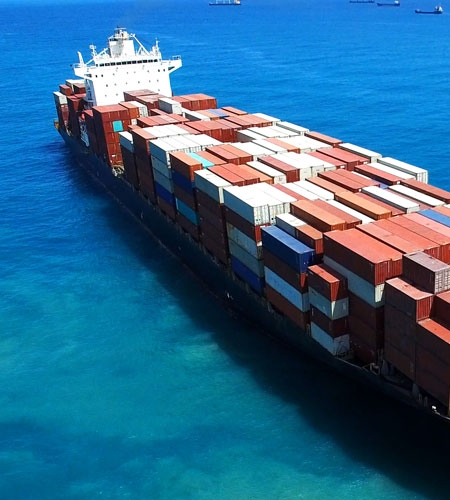By Cherie Gopie
During the early morning of March 26, 2024, a Singapore-flagged cargo ship collided with one of the most utilised bridges in Maryland, United States, the Francis Scott Key Bridge, causing the collapse of the bridge. Images from a live camera shocked the world as ‘The Dali,’ steadfastly moved through the cold steely waters on that grey morning straight to a support pillar of the bridge. The Dali was 300 metres long (985 feet), 48 metres wide and 24.8 metres tall, with gross tonnage of 95,000 tonnes, making it an average-sized container ship. The ship belonged to Singapore-based Grace Ocean Pte Ltd, which is owned by a Hong Kong group, and was reported to have been controlled by two Baltimore port pilots at the time of the collision. After striking the pillar, parts of the bridge began to collapse, and the entire structure crashed into the river below. Several vehicles plummeted as the bridge gave away, including a sizeable construction work crew resulting in the unfortunate death of 6 persons.
Early analysis seems to pin the cause of the accident on an electrical power failure on the vessel. The incident is still being investigated by the US National Transportation Safety Board whose deliberations also involve a review of the bridge design, which was built in 1972. The crew members who are reportedly from India and Sri Lanka remain marooned on board the vessel as investigations continue.
The incident certainly drew attention to the vulnerability of bridges and other infrastructure to damage from large vessels. The Francis Scott Key Bridge was a crucial transportation link for the city, and its collapse has caused significant disruptions to traffic and supply chains. The collision highlights the need for stringent safety protocols for large vessels, including proper training for crew members, regular maintenance of ship systems, and effective communication between pilots and crew. The accident also raised concerns about the transparency of safety incidents in the shipping industry. While major accidents like this one receive significant media attention, many smaller incidents are unreported, making it difficult, some have argued, to track patterns and identify potential safety risks.
The collision also raises several key insurance law implications that need to be considered:
Liability coverage: The shipowner’s liability insurance will likely be the primary source of compensation for victims and their families. However, the extent of the coverage may be limited and multiple parties may be held liable for damages including the shipowner, operator and even the bridge owner.
Subrogation: Insurers will seek to recover some of their losses from other liable parties through subrogation claims. Subrogation refers to the right of an insurance company to request reimbursement from an at fault party after a claim has been paid. This process can be complex especially if multiple insurers are involved.
Policy Limits: Given the magnitude of the losses, insurance policy limits may be insufficient to cover all claims. This could result in protracted litigation and negotiations over how to allocate limited resources among claimants.
Regulatory changes: The incident may prompt changes to insurance regulations and requirements for the shipping industry to better address the risks associated with large vessels and infrastructure.
It has been reported that the overall cost of the incident, including hull repairs, salvage, loss of life, crew injury, repairs to the bridge and business interruption have been variously estimated at between USD2 billion and USD4 billion. Grace Ocean and Synergy have asserted that they had no “privity or knowledge” of faults with the vessel and have petitioned that any liability for the incident be limited to USD43.67mn under the United States 1851 Limitation of Liability Act. It may take a significant amount of time, even years, for the Courts to determine whether this petition stands, or whether limitation can be broken.
In the Caribbean, whilst we may not have infrastructure such as the Francis Scott Bridge, we are certainly not immune from shipping accidents.
In this regard, the legal issues being raised by this accident can be applied here, depending on whether you are a shipowner, insurer, crew member, pilot, cargo owner, or even an unsuspecting injured third party. In a general sense, it is always advisable to ensure the limits and benefits of an insurance policy are well understood. Knowing the limits of your policy helps ensure you are not underinsured, helps avoid gaps in coverage and assists the policy owner in making informed decisions on insurance needs which can be of crucial importance in the event of an unexpected and unwelcome accident.
Cherie Gopie is a Partner at M. Hamel-Smith & Co. She can be reached at mhs@trinidadlaw.com
Disclaimer: This column contains general information on legal topics and does not constitute legal advice.


